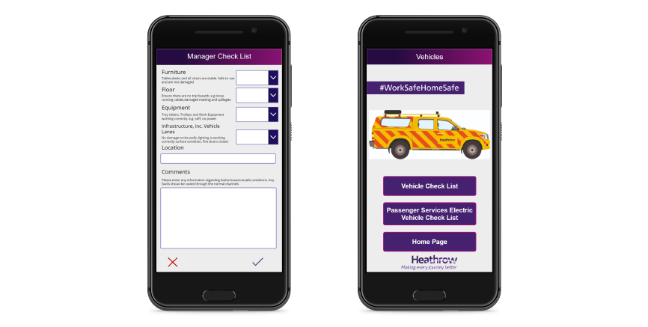Explore canvas applications
Most organizations have countless scenarios where people need assistance, need to perform some type of task, or have a duty that needs to be completed. For example, a nurse working at a hospital may need to triage a patient that is coming in for surgery. Another example could be a field technician who is working onsite at a customer location and finds that they don't have a specific part they need. It could also be as simple as an employee who is having an issue connecting to audio/video equipment in a conference room.
Typically, handling these scenarios might require many phone calls, multiple paper forms that need to be completed and passed along, and an extended wait time for processing. For example, the technician working in the field would often need to reach out to an inventory manager to identify if the part is in stock. The inventory manager likely needs to search in their inventory management software for the part. Depending on if they have the part or not, different forms need to be filled out so you can pull the part from inventory or order the part if needed. This process requires lots of environmental resources such as paper, and you have two people working on the issue.
Canvas apps created in Microsoft Power Apps are a great option for organizations to build tailored apps designed to perform specific tasks based on their needs. A key advantage to canvas apps is that they interact with data from multiple data sources. This means that you can integrate business data from a wide variety of Microsoft and third-party data sources into a single application. App designers can easily drag and drop various different controls into their application, and then add the desired functionality by writing Power FX formulas. There are Excel-like expressions that help specify how to work with the data. Once created, canvas apps can be easily shared with users so they can run them in a browser or on a mobile device. Additionally, canvas can be embedded into SharePoint sites, Power BI reports, model-driven applications, or even Microsoft Teams.
Let’s look at an example:
Heathrow Airport is one of the busiest airports in the world and models a small city in complexity and traffic. With over 76,000 people working on a given day and 200,000 travelers passing through, there's a strong need to continually optimize operations. One way to accomplish this goal is through the digitization of processes. They approached the process of digital transformation by empowering the frontline workers to build apps and solve problems. Through this process, they built at least 30 apps that eliminated 75,000 pages of paperwork, reduced data entry by nearly 1,000 hours, and saved the airport hundreds of thousands of dollars.

Canvas apps are easy to create and can be easily created from existing data. For example, canvas applications can be created from Excel spreadsheets, SharePoint sites, and more. Additionally, organizations that use the design capabilities of Figma to lay out applications, can convert those Figma sites into Power Apps. For more details, please go to Design a Power Apps canvas app by using Figma - Training | Microsoft Learn. If you don't need a customer design and your data is in Microsoft Dataverse, you can automatically generate a model-driven app. Let’s see how Heathrow Airport uses Power Apps.
Heathrow Airport inspires employee engagement with Microsoft Power Apps